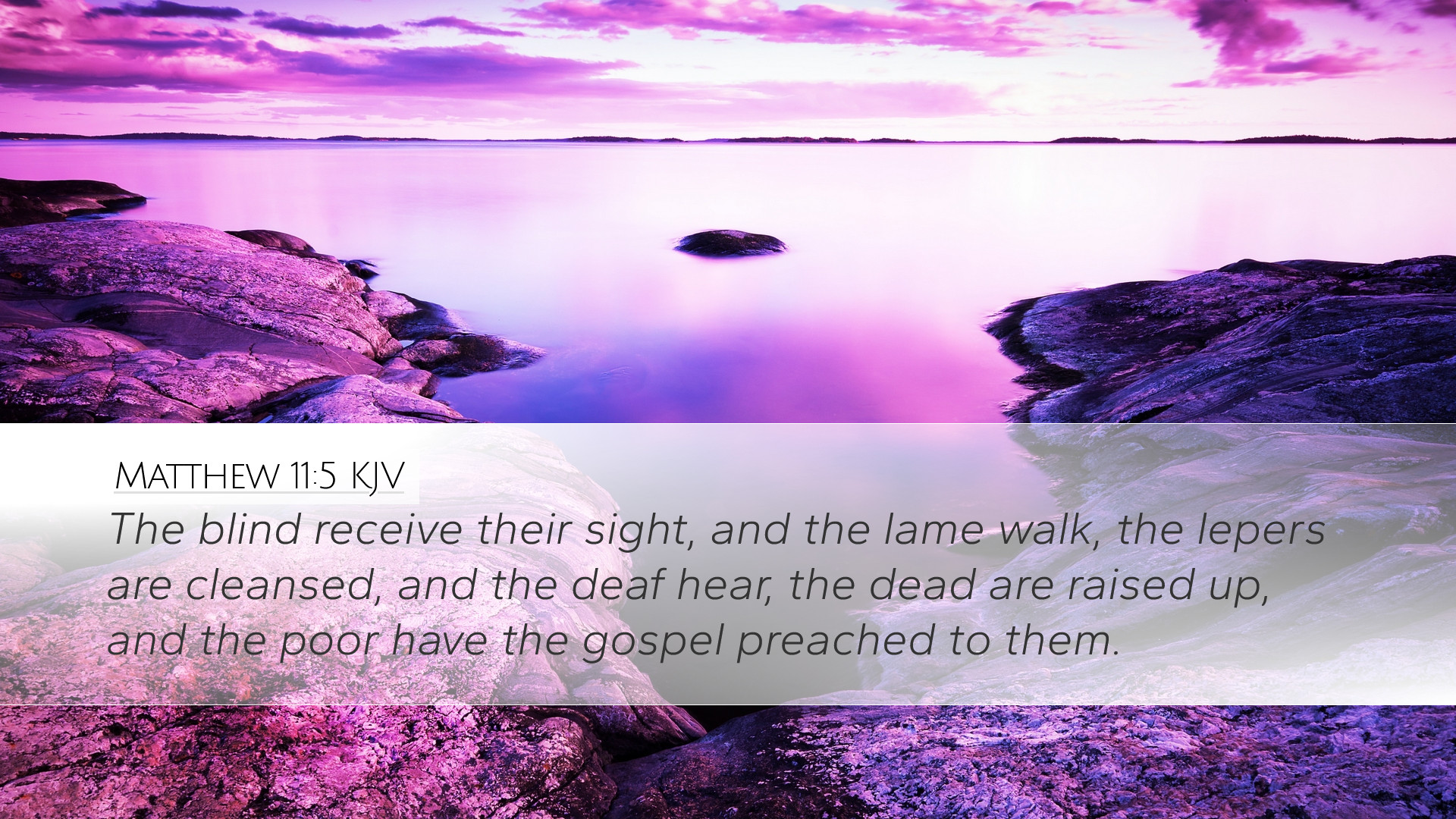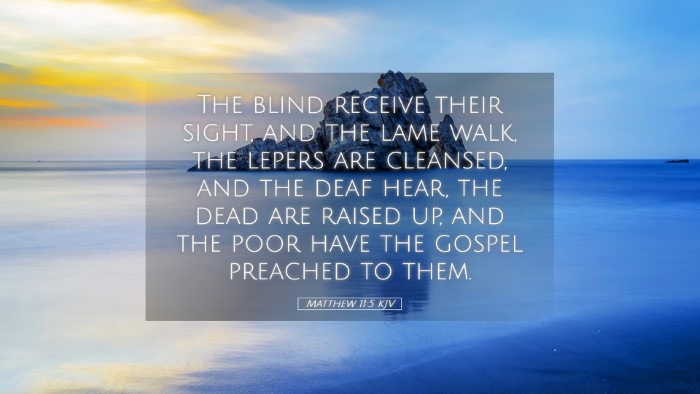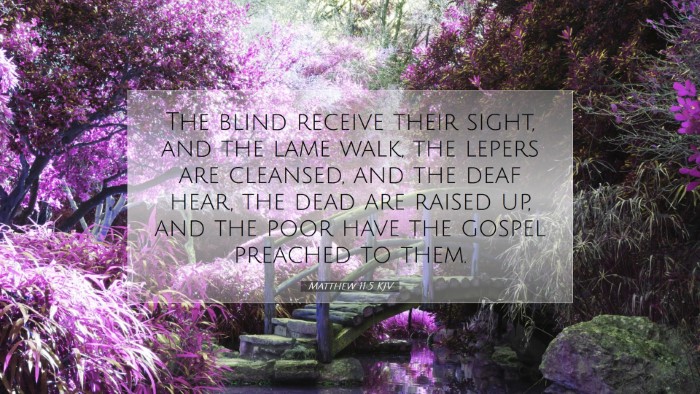Commentary on Matthew 11:5
Verse: "The blind receive their sight, and the lame walk, the lepers are cleansed, and the deaf hear; the dead are raised up, and the poor have the gospel preached to them." - Matthew 11:5
Introduction
This verse stands as a profound declaration of Jesus' mission and the confirmation of His identity as the Messiah. In this commentary, we will reflect on the insights of respected theologians, including Matthew Henry, Albert Barnes, and Adam Clarke, providing a rich exploration of the significance of this scripture for ministers, scholars, and students alike.
Contextual Analysis
Matthew 11:5 occurs within a broader narrative where John the Baptist, imprisoned and doubting, sends his disciples to inquire if Jesus is truly the Messiah. Jesus responds by pointing to His works, which fulfill the prophecies concerning the Messiah.
Matthew Henry notes that the miracles mentioned are both physical and spiritual manifestations of His ministry, reflecting the holistic nature of salvation Jesus brings.
Albert Barnes highlights that Jesus links His miracles directly with the prophetic hope of Israel, affirming His role in fulfilling the Old Testament promises.
Adam Clarke emphasizes the importance of the miraculous deeds as signs of the presence of God among His people, serving both to heal and to signal the coming of the Kingdom.
Detailed Insights
-
The Blind Receive Their Sight
This signifies both physical healing and spiritual enlightenment. Matthew Henry elucidates how spiritual blindness is a common ailment, applicable to all who do not see the truth of the Gospel, while the physical blindness symbolizes the need for divine intervention.
-
The Lame Walk
The healing of the lame not only speaks to physical restoration but also to the enabling of individuals to walk in righteousness. Albert Barnes suggests that this walking illustrates a new way of living, empowered by Christ.
-
The Lepers Are Cleansed
Lepers were outcasts under Jewish law, symbolizing sin that alienates from God. Adam Clarke notes that Christ's cleansing of lepers signifies His authority to forgive sins and heal humanity's brokenness, offering communion with God.
-
The Deaf Hear
The healing of the deaf illustrates spiritual receptiveness. Matthew Henry asserts that hearing the Gospel is essential for salvation, and this miracle points to Christ's ability to open ears to His Word.
-
The Dead Are Raised Up
This refers not only to the raising of the physically dead but to the spiritual resurrection that comes from faith in Christ. Albert Barnes emphasizes the transformative power of Christ to bring new life from death.
-
The Poor Have the Gospel Preached to Them
This phrase emphasizes Jesus’ mission to the marginalized. Adam Clarke remarks that the poor represent those who are often overlooked, and Christ's preaching brings hope and salvation to all, especially those who are spiritually impoverished.
Theological Implications
This verse encompasses key theological themes such as healing, salvation, and the proclamation of the Gospel. The miracles serve dual purposes: they affirm Jesus' identity as the Messiah and illustrate the nature of His Kingdom, which is characterized by grace, mercy, and systematic care for the broken and needy.
Application for Today
For pastors and theologians, this scripture offers a framework for understanding the holistic mission of the church in today's society. The call to proclaim the Gospel to the poor continues to resonate, leading to contemplative engagement with those marginalized by society.
Students of theology should appreciate the underlying missional ethos embedded in these verses, recognizing that theological education must promote actions that reflect Jesus' care for both the physical and spiritual needs of others.
Conclusion
Matthew 11:5 functions not only as a confirmation of Jesus' messianic identity but also as a call to His followers to engage deeply with the needs of both the body and the spirit. The insights drawn from these public domain commentaries provide a foundation for further exploration into the integrated mission of the church, reflective of Christ's own ministry on earth.


